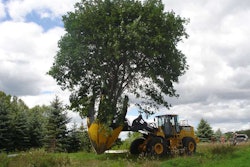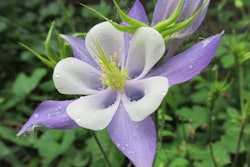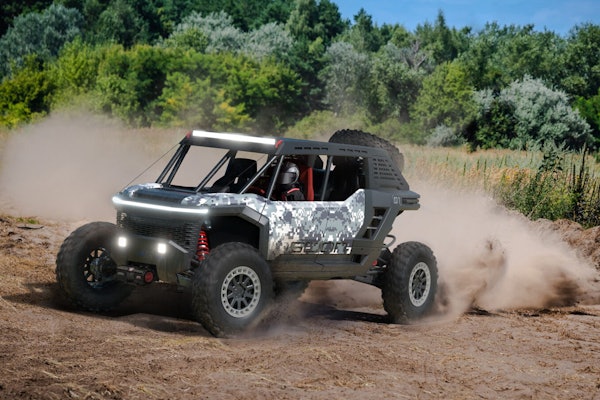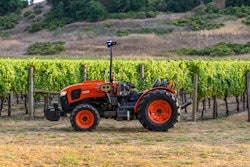 Viola cornuta can serve as a beautiful groundcover.
Viola cornuta can serve as a beautiful groundcover.Photo: Jill Odom/Total Landscape Care
When you think of groundcovers in landscaping, it’s likely that your thoughts turn immediately to turf. And why shouldn’t they? Turf is, after all, the most widely used groundcover in the world, by the strictest definition of the word. However, turf has its limitations, no matter how many varieties are developed to overcome difficult growing conditions. And besides, how boring would our landscapes be if we relied only on turf to fill them?
No, oftentimes what you really need is some other type of groundcover. Something instead of turf that provides a solution to a landscaping challenge. Or maybe you’re just trying to add some color, variety and texture to a landscape.
So what, besides turf, qualifies as groundcover? Generally speaking, groundcovers are plants that have the ability to spread over an area. Typically, they are low-growing, ranging from a few inches to 3 feet in height and can be either woody or herbaceous, evergreen or deciduous, clumping or running. Which you choose will depend on your intentions for using a groundcover.
Situations in which groundcovers work best include under trees where roots prohibit mowing or where a dense canopy prohibits good sunlight penetration; on steep slopes where erosion control is a factor; or in a landscape that needs a transitional element to soften the edge from turf to taller plants from a design perspective. Thankfully, there are groundcovers that fit each of these needs.
Choose wisely
There are many qualities of groundcovers you’ll want to consider before selecting plants to fit your overall objectives. Obviously, if you’re looking to plant in a shady area, you’ll want plants suited to that condition. But other, overlooked, plant qualities deserve serious consideration before making a selection. These include required care, growth rates and how they overwinter.
For example, planting a vine-type groundcover, such as ivy, in a landscape bed with shrubs can be a maintenance hassle because the ivy will climb the shrubs. Also, if you select an herbaceous groundcover, know that many of these will die back in the winter, leaving bare patches. If this isn’t acceptable to you or your client, you need to find an appropriate evergreen for the site. If you’ll be raking under trees in the winter, you’ll need a groundcover that you can mow or that you can run a rake through.
While you’ll want plants suited to your region and climate, here is a starting point of typical species to consider. Before making any final selections, consult a horticultural reference or your local cooperative extension agent.
For shade: Ajuga, barren strawberry, Bishop’s weed, blue fescue, creeping mahonia, Epimedium, hakonechloa grass, heartleaf bergenia, ivy (Hedera), hostas, lily-of-the-valley, lilyturf (Liriope), mondo grasses, periwinkles, Solomon’s seals (Polygonatum), spotted lamium, sweet woodruff, wintercreeper and yellow archangel.
For slopes: Ajuga, blue fescue, bracken, Cerastium, cranesbill, creeping juniper, crown vetch, English ivy, fountain grass, gazania, goutweed, Hall’s honeysuckle, ice plant, lambsear, lantana, lily-of-the-valley, lilyturf (Liriope), little bluestem, ribbongrass, rockspray cotoneaster, rosemary, sedums, St. Johnswort, verbena, Vinca minor, wintercreeper and yarrow.
For sun: barren strawberry, bearberry, bittersweet, coral bells, dusty miller, heather, ice plant, Japanese blood grass, juniper, lilyturf (Liriope), mondo grass, ornamental grasses, Phlox, sedums, thyme, trumpet creeper, veronica, viola and yucca.
Planting and care
For the most part, plant groundcovers any time during the growing season; however, it’s best to plant them during spring or fall during what are considering ideal growing conditions. This way, you won’t have to bother with increased irrigation cycles during the summer or increased maintenance during times of freeze in the winter.
To avoid having to shear groundcovers every season, be aware of how much the groundcover can potentially spread before planning your planting. A good measure is to place plants back from the edge or boundary by a distance of at least half of their projected growth diameter.
Irrigate newly planted groundcovers with 1 inch of water every five to seven days. For established groundcovers, schedule irrigation to water deeply and infrequently (about twice a week, but let rainfall dictate necessity). Fertilize groundcovers regularly. Choose a good, balanced, all-around fertilizer with slow-release properties. While there are some pre-emergence herbicides labeled for use on groundcovers, your best bet while plants are becoming established is hand-weeding. Once the plant is established, it should shade out the weeds.











